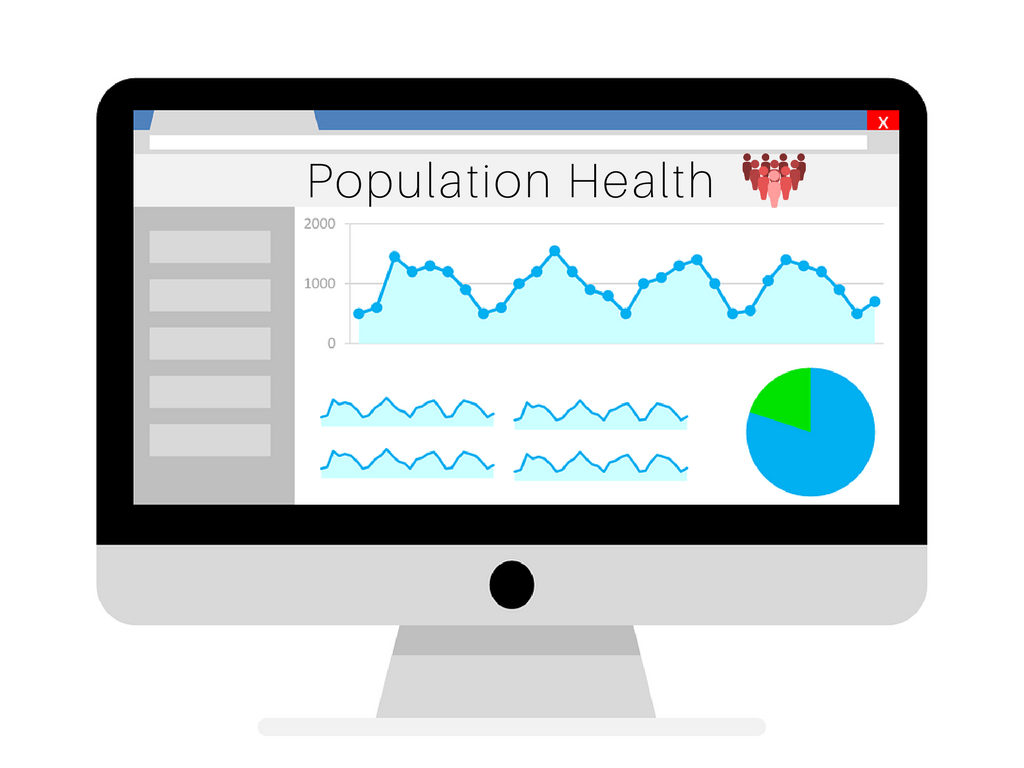O ver the past few years, population health management has become a key buzz term in healthcare and is rapidly gaining importance in a healthcare organization’s upcoming fiscal year initiatives. Whether it’s through Accountable Care Organization (ACO) or Patient Centered Medical Home (PCMH) models, population health management centers around identifying key patient populations and using the tools within an EHR to collect data from and present data to providers to determine the patients that require immediate attention and to proactively give providers metrics that help them make important clinical decisions.
ver the past few years, population health management has become a key buzz term in healthcare and is rapidly gaining importance in a healthcare organization’s upcoming fiscal year initiatives. Whether it’s through Accountable Care Organization (ACO) or Patient Centered Medical Home (PCMH) models, population health management centers around identifying key patient populations and using the tools within an EHR to collect data from and present data to providers to determine the patients that require immediate attention and to proactively give providers metrics that help them make important clinical decisions.
The power of an EHR is in the discrete and reportable data that is entered throughout a patient’s numerous encounters, from emergency room visits to outpatient visits with primary care providers. Luckily, Epic offers robust functionality through numerous tools that allow an organization’s IT/IS department to set up the framework for population health management. We often see the following when talking about the key Epic build and set up that becomes the backbone of any organization’s chronic disease and health management initiatives:
Registries
In its simplest form, registries are groups of patients who match a specified criteria and, based on that population, have relevant clinical and miscellaneous metrics. Registries could categorize and gather data about patients with a specific chronic disease or patients of a certain age and sex.
Let’s take diabetes for example:
A diabetes registry could include an Epic inclusion rule that looks at patients who have a diabetes-related diagnosis on their problem list and/or have had an encounter with a diabetes diagnosis documented within the last five (5) years. Based on this population, you can decide what types of data (metrics) providers would like to know. For diabetes, your providers may want to see:
- Patient’s Last Office Visit Date
- An indicator if the patient’s blood pressure (BP) is less than 140/90
- Patient’s Last LDL result
- Patient’s Last Positive Urine Protein Result
- Patient’s Last Foot Exam Date
Reporting Workbench Reports
Reporting Workbench is the operational tool directly in Epic Hyperspace that can provide end-users with pertinent data to complete their managerial tasks or to determine appropriate next clinical steps for their patients. Once the metrics are connected to the Registry and updating on a daily or weekly basis, you can use Reporting Workbench reports to provide useful drilldown capabilities that allow providers to see more specific data at the patient level, presenting information in report display columns that come from the Registry build.
We’ve also seen the need for organizations to create Reporting Workbench reports for care management staff members who proactively monitor the hospital-wide care of chronic disease patients or any registry patient populations.
Radar Dashboards
Dashboards are the “one-stop-shop” tools for reporting needs in Epic that allow organizations to present an aggregate view of data to end users. It is common for hospitals to set performance thresholds for ambulatory providers to ensure they are effectively caring for their patients (e.g., for a provider’s Congestive Heart Failure patients, 95% of the patients must have had a visit to a Cardiologist in the last 6 months to be at an acceptable threshold level). In version Epic 2012, a dashboard called My Panel Metrics was introduced to provide this need for registry patient populations.
This powerful dashboard uses Numerator, Denominator and Exclusion logic, similar to national quality measures, and can be customized to display data that comes from a specific registry. For a physician’s patient population that exists in a particular registry, she can see her performance for each metric and determine what she needs to do to improve the care of her patients.
For example: in the Diabetes Registry you can include metrics about Hemoglobin A1C. Within the My Panel Metric dashboard, you can display the percentage of your patients who have their A1C in control. For the patients who have A1C that is uncontrolled, the physician may want to schedule follow-up visits with them to determine the right plan of action.
All of these tools should be considered to give providers the data at their fingertips that can improve the care of chronic disease patients. Preventative care continues to be the focus in our industry, so stay ahead of the ball and beef up your Epic population management build!


